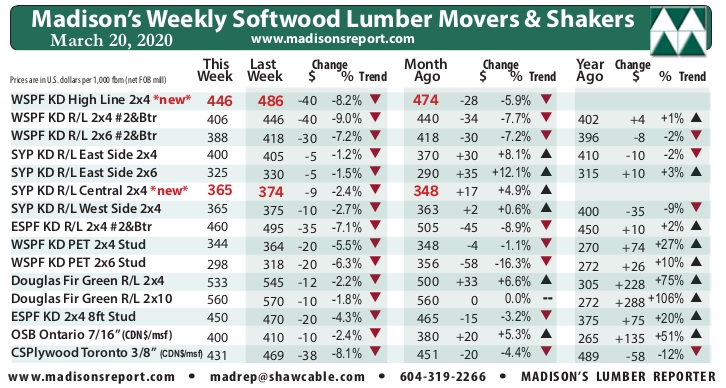
News information
Publisher chinawoodsupplychain | DATE 2020.03.27
US and Canadian softwood lumber demand remained high last week, but stocking wholesalers and resellers struggled with issues around the need to quarantine and keep social distance for their staff, according to Madison’s Lumber Reporter.
Sawmills and lumber producers were often occupied with customers who were trying to cancel, or even get refunds on, orders already made. The Canadian federal government as well as most US states deemed lumber and other construction material as “essential” - meaning these operations and stores were not required to close - even as the Canadian/US border was closed to public travel.

Meanwhile, the delivery of goods and trade
material was also not subject to a restriction. Some operators had difficulty
sourcing trucks or rail cars, while others reported smooth and speedy delivery
by truck, as US and Canadian highways were empty of traffic and the border was
open only to returning citizens and business supply chain. Scattered reports of
logistical headaches began to surface, including sharply increasing freight
costs and stranded or undelivered loads.
While most of last week was characterized
by falling prices and sluggish business, Western Spruce-Pine-Fir trading
apparently saw some decent fits and starts of demand among the malaise. One
large producer described Tuesday, March 17, as their biggest sales day in
weeks, though they weren’t happy with prices. Two- or three-week order files at
sawmills were common and while most bread and butter items fell between $10 and
$40 per mfbm. Interestingly, demand for low grade lumber was a bright spot with
2x6 #3/Utility and #4/Economy flat in pricing. A few pockets of consumption and
building activity continued in the US, keeping some lumber yards busy this
week.
Late-arriving rail cars prevailed again,
especially in Northern British Columbia. Transportation wasn’t actually as bad
as some expected: due to the torpid economy transit volumes have decreased, and
the majority of truck and rail operators already work in comparative isolation.
